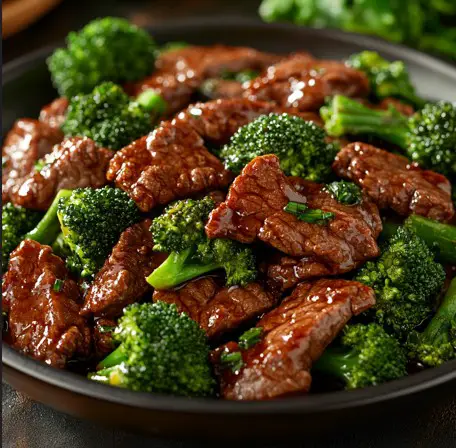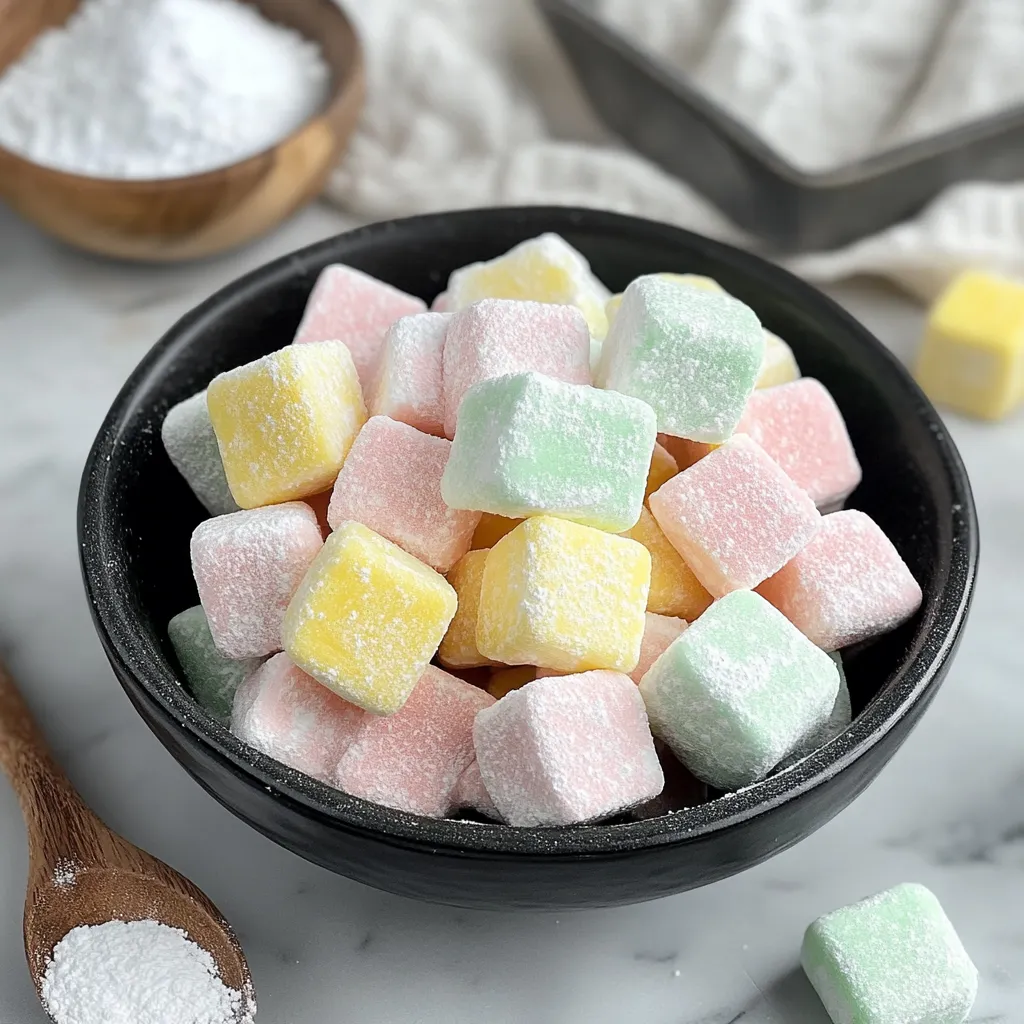Slow Cooker Beef and Broccoli is a beloved dish that combines tender, slow-cooked beef with crisp, fresh broccoli in a savory sauce. This meal is a favorite among home cooks due to its simplicity, minimal hands-on time, and the rich, deep flavors that develop during slow cooking. The slow cooker method allows the beef to become incredibly tender, absorbing the flavors of soy sauce, garlic, and ginger, while the broccoli retains a satisfying crunch.
This dish’s popularity also stems from its versatility; it can easily be customized to suit individual tastes or dietary preferences. Whether you’re looking for a comforting weeknight dinner or an easy meal to prep ahead of time, Slow Cooker Beef and Broccoli fits the bill perfectly.
The slow-cooking process is key to achieving the dish’s signature texture and flavor. By cooking the beef at a low temperature over several hours, the meat breaks down into a melt-in-your-mouth consistency, while the sauce thickens and intensifies in flavor. This method ensures that every bite is packed with savory goodness, making it a go-to recipe for busy families and food enthusiasts alike.
Ingredients Breakdown
The success of Slow Cooker Beef and Broccoli hinges on the quality of its ingredients. Each component plays a vital role in creating the dish’s signature flavors and textures.
- Beef Chuck Roast: This cut of beef is ideal for slow cooking due to its marbling and connective tissue, which break down over long cooking periods, resulting in tender, juicy meat. When selecting chuck roast, look for bright red meat with even marbling and a firm texture.
- Soy Sauce: Soy sauce is the backbone of the dish’s savory, umami-rich sauce. Opt for a high-quality soy sauce, preferably low-sodium, to control the saltiness of the dish. Look for soy sauce made from natural fermentation for the best flavor.
- Sesame Oil: This ingredient adds a nutty, aromatic depth to the dish. Toasted sesame oil is preferred for its stronger flavor. Choose a sesame oil that is deep brown in color with a robust aroma, and store it in a cool, dark place to maintain its freshness.
- Broccoli: Fresh broccoli adds a crisp, vibrant contrast to the rich, slow-cooked beef. Look for broccoli with firm, green florets and fresh-cut stems. Avoid any that are yellowing or wilting.
- Garlic and Ginger: These aromatics provide a pungent, spicy foundation that complements the beef and soy sauce. Fresh garlic and ginger should be firm, with no signs of sprouting or mold.
List and Description of Key Ingredients:
- Beef Chuck Roast: A flavorful cut that’s ideal for slow cooking. It becomes tender and juicy after hours in the slow cooker.
- Soy Sauce: Adds a salty, umami flavor that forms the base of the dish’s sauce.
- Sesame Oil: Provides a nutty aroma and rich flavor, enhancing the overall taste.
- Garlic and Ginger: Essential aromatics that infuse the dish with a warm, pungent, and slightly spicy profile.
- Broccoli: Fresh or frozen, it provides a crisp, contrasting texture and a dose of nutrients.
- Cornstarch: Used as a thickening agent to give the sauce its signature silky texture.
- Brown Sugar: Balances the saltiness of the soy sauce with a touch of sweetness.
Importance of Quality Ingredients: Using high-quality ingredients ensures the best flavor and texture. For instance, choosing a well-marbled beef chuck roast will result in tender, flavorful meat. Opting for low-sodium soy sauce allows better control over the dish’s saltiness, while fresh garlic and ginger deliver a more vibrant taste than their dried counterparts.
Tips for Selecting Ingredients:
- Beef: Look for a chuck roast with good marbling (the white streaks of fat) for tenderness.
- Soy Sauce: Choose a reputable brand, and consider low-sodium varieties if you’re watching your salt intake.
- Broccoli: Fresh broccoli should have firm stalks and dark green florets; avoid limp or yellowing pieces.
Preparation Steps
Preparing the Beef:
- Trim and Slice the Beef: Begin by trimming any excess fat from the beef chuck roast. Cut the beef into thin, bite-sized strips, which will help it cook evenly and absorb the sauce better.
- Marinate (Optional): For deeper flavor, you can marinate the beef in a mixture of soy sauce, garlic, and ginger for at least 30 minutes before cooking.
Making the Sauce:
- Combine Ingredients: In a bowl, whisk together soy sauce, brown sugar, garlic, ginger, and sesame oil. This forms the base of the sauce, balancing salty, sweet, and aromatic flavors.
- Thicken with Cornstarch: To create a thick, glossy sauce, dissolve cornstarch in water and stir it into the soy sauce mixture. This will help the sauce cling to the beef and broccoli.
Using the Slow Cooker:
- Layer the Ingredients: Place the beef strips into the slow cooker, ensuring they are spread evenly. Pour the prepared sauce over the beef, making sure all pieces are coated.
- Cook on Low: Set the slow cooker to low and cook for 5-6 hours, or until the beef is tender. The low, slow heat allows the flavors to meld and the meat to become melt-in-your-mouth soft.
- Add Broccoli: About 30 minutes before serving, stir in the broccoli. This keeps the broccoli crisp-tender, preserving its color and nutrients.
- Final Touches: After cooking, taste the sauce and adjust the seasoning if needed. If the sauce is too thin, remove the lid and cook on high for the last 15-20 minutes to reduce it slightly.
The Art of Slow Cooking
Explanation of Slow-Cooking and Its Benefits: Slow cooking is a method where food is cooked at a low temperature over an extended period, typically in a slow cooker. This technique allows ingredients to cook gently, retaining moisture and absorbing flavors deeply. It’s particularly advantageous for tougher cuts of meat, which become tender and succulent after hours of slow cooking.
How Slow-Cooking Affects the Texture and Flavor of Beef: When beef is slow-cooked, the connective tissues break down gradually, turning into gelatin and resulting in a melt-in-your-mouth texture. The slow process also allows the beef to absorb the flavors of the sauce, garlic, and ginger more thoroughly than quicker cooking methods. The result is a dish with rich, deep flavors that develop over time, making every bite incredibly satisfying.
Comparison with Other Cooking Methods: In contrast to grilling or stir-frying, where meat is cooked quickly at high temperatures, slow cooking provides a gentler approach. While high-heat methods can produce a seared, caramelized exterior, they often require more tender cuts of meat to avoid toughness. Slow cooking, however, excels with tougher cuts like chuck roast, transforming them into fork-tender morsels. Additionally, unlike roasting or baking, slow cooking requires less active attention, making it ideal for busy schedules. The convenience and consistent results make slow cooking a favorite among home cooks looking to create hearty, flavorful meals with minimal effort.
Customizing the Recipe
Variations and Substitutions:
- Fresh vs. Frozen Broccoli: Fresh broccoli is ideal for a crisp-tender texture, but frozen broccoli can be a convenient alternative. If using frozen, add it directly to the slow cooker without thawing, but shorten the cooking time slightly to prevent overcooking.
- Alternate Vegetables: You can substitute broccoli with other vegetables like snap peas, bell peppers, or cauliflower for variety. These alternatives will also add different textures and colors to the dish.
Adjusting the Recipe for Different Tastes:
- Spice Levels: To increase the heat, add red pepper flakes or a dash of Sriracha to the sauce. For a milder version, reduce or omit spicy ingredients and focus on the savory and sweet aspects of the dish.
- Sweetness: Adjust the sweetness by altering the amount of brown sugar. For a sweeter dish, increase the sugar slightly, or reduce it if you prefer a more savory flavor profile. You can also substitute brown sugar with honey or a sugar alternative like stevia for different nuances in sweetness.
Making the Dish Gluten-Free or Low-Sodium:
- Gluten-Free: To make the dish gluten-free, ensure all ingredients, especially soy sauce, are certified gluten-free. Tamari is a great gluten-free alternative to soy sauce, offering a similar depth of flavor.
- Low-Sodium: For a low-sodium version, opt for low-sodium soy sauce and reduce the added salt. You can enhance flavor with herbs and spices like garlic, ginger, or a splash of vinegar instead of relying on salt. Additionally, choose low-sodium beef broth if using it as part of the liquid base.
Serving Suggestions
Best Ways to Serve Beef and Broccoli: Slow Cooker Beef and Broccoli is traditionally served over a bed of steamed rice, which absorbs the savory sauce perfectly. Jasmine or brown rice are excellent choices. For a low-carb option, serve it over cauliflower rice or zucchini noodles. Noodles, such as udon or lo mein, also pair well, soaking up the rich flavors of the dish.
Pairing with Sides and Beverages: Complement this dish with simple sides like steamed or stir-fried vegetables (e.g., bok choy, snap peas) to keep the meal balanced and nutritious. A light Asian-inspired salad with a tangy sesame dressing can also add freshness. For beverages, consider a crisp white wine like Sauvignon Blanc or a light beer to cleanse the palate between bites. For a non-alcoholic option, green tea or a ginger-infused sparkling water works well.
Presentation Tips: To achieve a restaurant-quality presentation, arrange the beef and broccoli neatly on the plate, spooning the sauce generously over the top. Garnish with sesame seeds and finely chopped green onions for a pop of color and extra flavor. Serve in a wide, shallow bowl for a sophisticated look, and use chopsticks to enhance the dining experience.
FAQs Section
Can I use a different cut of beef? Yes, you can use other cuts of beef, but the results may vary. Beef chuck roast is ideal for slow cooking due to its marbling, which breaks down during cooking and results in tender meat. However, you can also use beef brisket, short ribs, or stewing beef. Leaner cuts like sirloin or round roast may work, but they won’t be as tender and may require a shorter cooking time to prevent drying out.
Do I need to thaw the broccoli first? If you’re using frozen broccoli, there’s no need to thaw it before adding it to the slow cooker. However, it’s best to add the frozen broccoli towards the end of the cooking time—about 30 minutes before serving. This method helps prevent the broccoli from becoming too soft or mushy. Fresh broccoli can be added at the same point in the cooking process, ensuring it retains a slight crunch.
How long can I store leftovers? Leftovers can be stored in an airtight container in the refrigerator for up to 3-4 days. To reheat, warm the beef and broccoli gently on the stovetop or in the microwave, adding a splash of water or broth if needed to loosen the sauce. For longer storage, you can freeze the dish for up to 2 months. Thaw it overnight in the refrigerator before reheating.
Can I make this recipe ahead of time? Yes, this recipe is perfect for meal prepping. You can prepare the beef and sauce in advance, then store them in the refrigerator for up to 24 hours before cooking. Alternatively, you can cook the entire dish, let it cool, and store it in the fridge for a ready-to-reheat meal. If making ahead, wait to add the broccoli until reheating to maintain its texture.
What can I substitute for sesame oil? Sesame oil adds a distinctive nutty flavor, but if you don’t have it, you can use alternatives like peanut oil, which has a similar richness. For a milder flavor, vegetable or canola oil can be used, though they won’t provide the same depth. If you want to mimic the sesame flavor, add a sprinkle of toasted sesame seeds to the dish before serving. Another option is to mix a small amount of tahini (sesame seed paste) with another oil to approximate the taste and texture.
Conclusion
Slow Cooker Beef and Broccoli is a versatile, flavorful dish that’s easy to prepare and perfect for busy weeknights. The slow-cooking method ensures tender beef and a rich, savory sauce, while the ability to customize the ingredients makes it suitable for various tastes and dietary needs. Whether you’re an experienced cook or a beginner, this recipe is sure to impress with minimal effort. Give it a try, and don’t forget to share your results with friends and family—you might just discover a new favorite meal that everyone will love!

Slow Cooker Beef and Broccoli
Description
This Slow Cooker Beef and Broccoli recipe offers a convenient way to enjoy a classic takeout dish right at home. With tender beef and crisp-tender broccoli enveloped in a savory, slightly sweet sauce, this meal is both comforting and satisfying. Perfect for busy weeknights, it requires minimal prep and allows the slow cooker to do all the work, resulting in a flavorful dish the whole family will love.
Ingredients
- 1 1/2 pound beef chuck roast boneless, sliced into thin strips
- 1 cup beef consomme or beef broth
- 1/2 cup low sodium soy sauce
- 1/3 cup dark brown sugar
- 1 tbsp. sesame oil
- 3 garlic cloves minced
- 1/4 cup cornstarch
- Frozen Broccoli Florets about 3 cups (I used one 14 oz bag)
- White or brown rice cooked
Instructions
-
In a mixing bowl, whisk together the beef consume, soy sauce, dark brown sugar, sesame oil, and garlic.
-
Lay the beef strips in the crockpot and pour the sauce over, tossing the strips to coat.
-
Turn the crockpot on low and cook for about 6 hours. Mine was ready at 5. You don’t want to cook the beef too long or it will start to shred.
-
About an hour before it is done, take 1/4 cup of the sauce and whisk it in a small bowl with the cornstarch. Slowly stir this into the crockpot. Add in the broccoli the last 30 minutes and let the broccoli cook through. You don’t want to add the broccoli until the very end or it will be mushy.
-
Serve over white rice and enjoy!!
Notes
For best results, use fresh broccoli and add it towards the end of the cooking process to retain its texture. If using frozen broccoli, add it without thawing to prevent overcooking. Adjust the seasoning to your taste, and feel free to customize with your favorite vegetables or spice levels.










Hi Naomi! Yummy recipe. You mention ginger in the write up of the recipe but it’s not noted in the ingredients. How much ginger and do we use fresh grated ginger root or powder? Cheers!